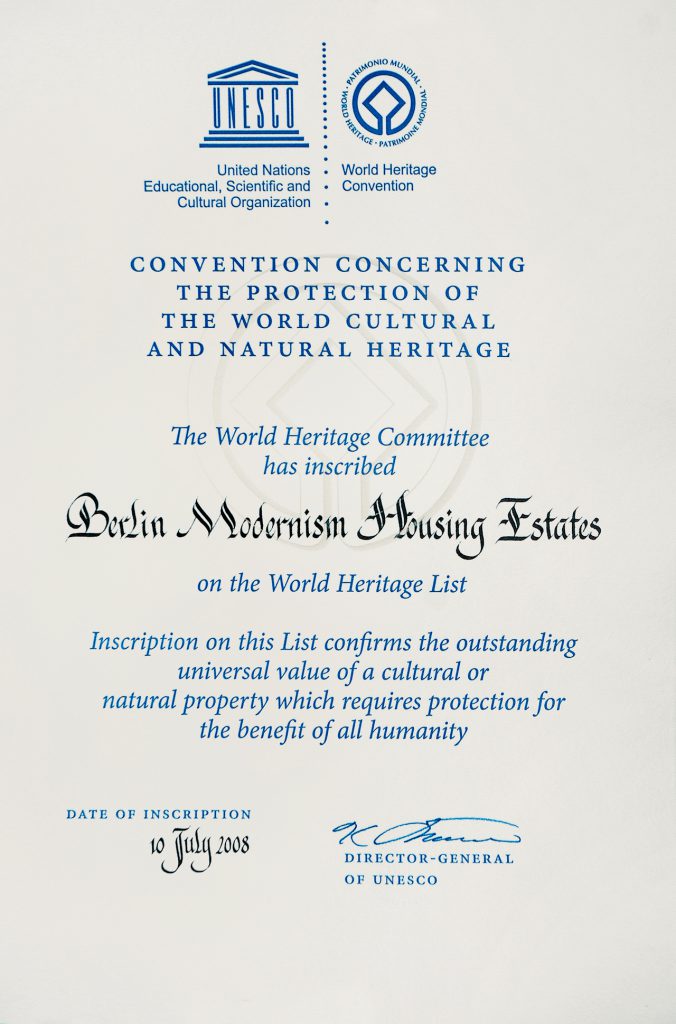UNESCO > World Heritage Sites
An entry in the World Heritage list is the highest international award for cultural assets. It can apply to all types of man-made structures, parks, and monuments, and even cultural traditions. World Heritage status is awarded after an international panel of experts certifies the monument has "outstanding universal value". At regular intervals, countries can submit their own proposals for listings, which are then evaluated by the United Nations Educational, Scientific and Cultural Organization (UNESCO) and its advisory body, the International Council of Monuments and Sites (ICOMOS). Proposals made by governments are called "tentative lists" and must be well-prepared and supported. After lengthy preparations, the six Berlin Modernism Housing Estates described on this website were jointly listed as a UNESCO World Heritage Site in 2008. They can thus be considered Berlin's most important contribution to international architectural history. The German capital also boasts two other World Heritage Sites: Museum Island, and the Prussian Palaces and Gardens, the latter split between Berlin and Potsdam. As of 2019, Berlin was one of just three cities in the world (along with Rome and Mexico City) to have three World Heritage Sites; Germany as a whole has 44. Two further complexes in Berlin are so unique that they could potentially become World Heritage Sites in the foreseeable future: the collective buildings of Elektropolis Berlin, and the related pair Hansa Quarter and Karl-Marx-Allee (under the label "Dual Berlin").

